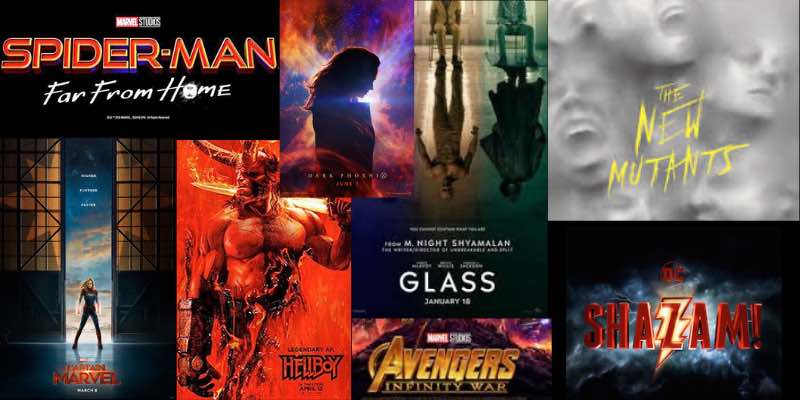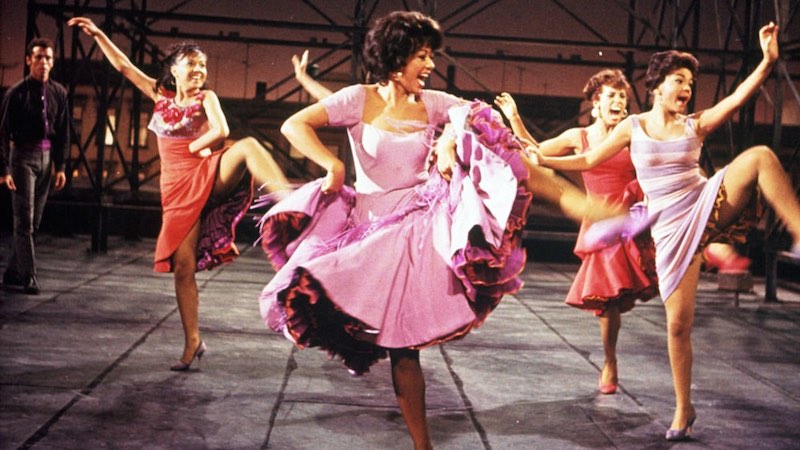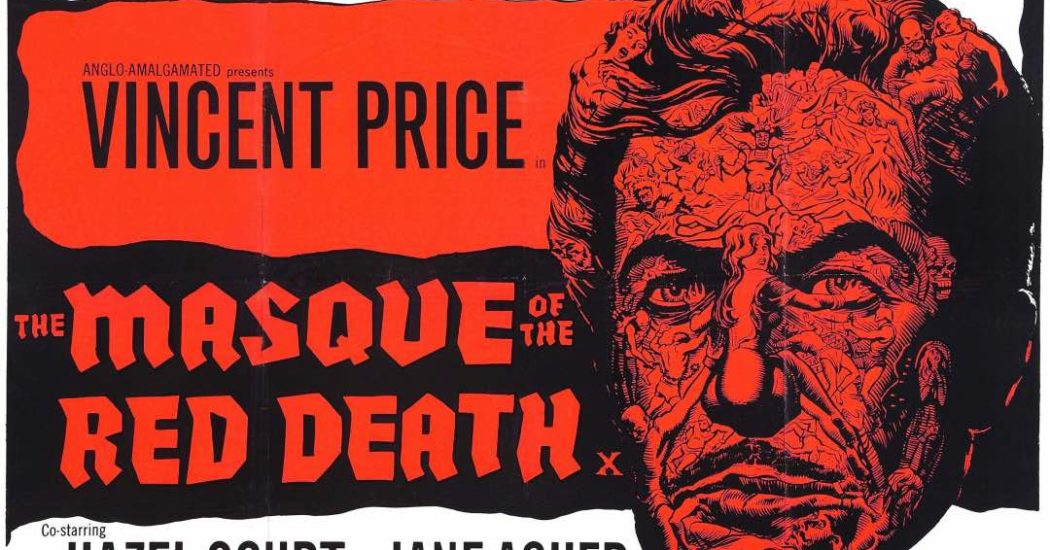
Cinema Fearité presents 'The Masque Of The Red Death'
Cinema Fearité pays tribute to the late Nicolas Roeg, cinematographer for Roger Corman's 'The Masque of the Red Death.'
This past Thanksgiving weekend saw the passing of unsung film auteur Nicolas Roeg. Roeg was best known as the director of the horrifying ghost story Don’t Look Now, the whimsical occult fantasy The Witches, and the dreamy sci-fi David Bowie vehicle The Man Who Fell to Earth, but his contributions to cinematic history go much deeper than that. Before he directed, Roeg was a storied cinematographer, with one of his most important works being Roger Corman’s 1964 Edgar Allan Poe adaptation The Masque of the Red Death.
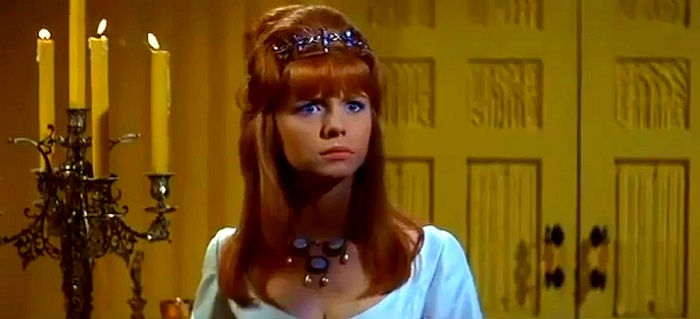
The Masque of the Red Death stars the inimitable Vincent Price (The Tingler, The Fly, Diary of a Madman) as Prince Prospero, a nobleman who discovers that his countryside is being ravaged by the Red Death plague. Prospero locks himself and the other rich people of the land in his castle, quarantining them away from the sickness, but not before taking a pair of villagers named Gino (David Weston from Witchcraft) and Lodovico (Nigel Green from Zulu) prisoner for questioning his ruling policies. For good measure, Prospero also takes a young woman named Francesca (Deep End’s Jane Asher), the lover of Gino and Daughter of Lodovico, for his own personal pleasure.
At his castle, Francesca discovers that Prospero is a Satanist when she finds him practicing a satanic ritual with another woman named Juliana (The Curse of Frankenstein’s Hazel Court). Prospero announces that he will throw a masquerade party for his “guests” to entertain them while they are holed up within the safety of his castle. His only stipulation is that none of them wear costumes that are red. Of course, a mysterious figure shows up at the ball, completely cloaked in the devil’s color. While all of this is going on, Francesca must come up with a plan to free her family from Prospero’s clutches before the supernatural gala gets out of hand.
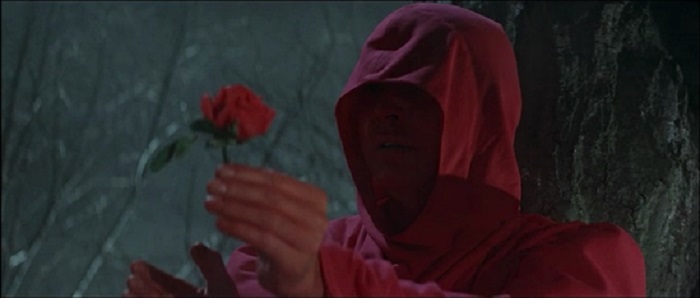
The Masque of the Red Death was the seventh out of eight films in the Roger Corman “Poe Cycle” of films. Initially, Corman wanted to follow up his first Poe film, House of Usher, with The Masque of the Red Death, those being his two favorite Poe stories, but circumstances prevented it, so Corman made five other Poe movies before finally getting around to his passion project.
The screenplay was written by Charles Beaumont, who also wrote Premature Burial for Corman, but is far more well-known as one of Rod Serling’s go-to scribes for “The Twilight Zone.” Corman liked Beaumont’s script, particularly the Satanism angle which was not present in the original Poe story, but had R. Wright Campbell (Man of a Thousand Faces) do a rewrite that incorporated another Poe story, “Hop-Frog,” as a subplot. The Masque of the Red Death was also the first of the Corman-Poe cycle to have been shot in England.
Which is probably how London native Nicolas Roeg wound up being involved as cinematographer. Roeg worked his way up through the ranks of the British film industry, and while he did do some second unit photography for David Lean on Lawrence of Arabia, The Masque of the Red Death was his most high-profile project at the time, even if it was just a Corman production. Up until then, Roeg had preferred to work in black and white, but The Masque of the Red Death was shot in gorgeous Pathécolor, and the film is bathed in bright and beautiful hues, with obvious attention given to the titular red (a trend which would be echoed the next decade in Roeg’s own Don’t Look Now).
Just about every shot in the film includes some kind of motion, with Roeg’s camera shifting and swirling throughout every scene so that the audience is more than just a casual observer – it’s an active participant in the proceedings. Even before he directed, Roeg showed that he had a clear eye for the cinematic, and he displayed it fully with his photography for The Masque of the Red Death.
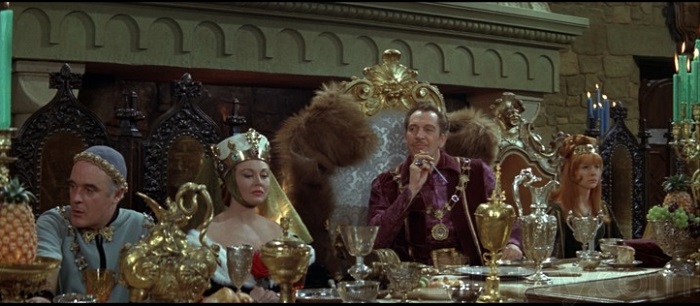
As technically proficient as Roeg’s cinematography is in the film, it is still, of course, a Roger Corman movie. Corman was able to shoot his film on the Oscar-nominated sets of the just-wrapped Richard Burton/Peter O’Toole vehicle Becket, and was allotted a lavish five weeks for production, almost twice as long as the low-budget movie mogul was used to taking (although Corman did complain about the speed – or lack thereof – of the British crew). The hammy Poe-esque dialogue and obvious soundstage external sequences never elevate the movie above Corman’s usual B-movie aesthetic, no matter how much dry ice fog was pumped in.
This is a good thing, though; the Corman-Poe Cycle was always more about melodrama and camp than it was about sheer terror – not only does Poe’s “Hop-Frog” make an appearance, but sharp-eyed Poeheads will also note hilarious winks and nods to other tales such as “The Raven” and “The Pit and the Pendulum.” It may be the best made movie of the Poe Cycle, but The Masque of the Red Death is still full of that Roger Corman low-rent fun, from its extended torturous dream sequence to its predictable and drawn-out penultimate party scene.
Which brings us to Vincent Price. Price was very much a fixture of the Corman-Poe cycle, sort of like an unofficial third wheel in the machine – with the exception of Premature Burial, Price was in every one of them. His work in The Masque of the Red Death is subtle and restrained, at least by Vincent Price standards, with just enough charismatic moustache twisting and evil laughter to keep things interesting.
Price was an accomplished actor who became a cultural icon, so even his most devilishly ghoulish roles are played with precision and nuance. Prince Prospero isn’t Price’s most outwardly sadistic character (Matthew Hopkins, Price’s unscrupulous witch hunter from Witchfinder General comes to mind there), but as with any movie he’s in, whether he’s playing good or evil, Price is the anchor in The Masque of the Red Death.
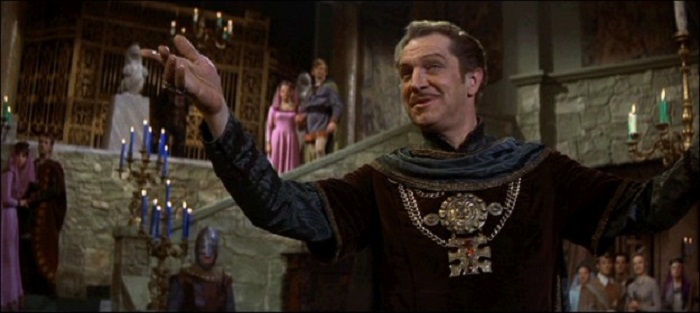
But we weren’t talking about Vincent Price, Roger Corman, or even Edgar Allan Poe. We were discussing the formative years of cinematographer-turned-film auteur Nicolas Roeg. And while everyone else is remembering the psychological horror of Don’t Look Now or the otherworldly wonder of The Man Who Fell to Earth, take a few minutes to remember just how great The Masque of the Red Death looked, and think about how the experience of working with Roger Corman and Vincent Price shaped the director’s future career. And how he, in turn, made his mark of the Corman-Poe Cycle and, therefore, on the horror world as a whole.
